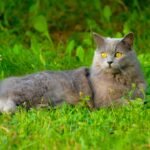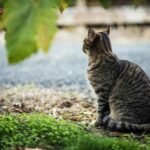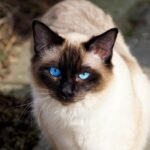Have you ever gazed into those mesmerizing blue eyes of a Siamese cat and wondered about the secrets they hold? These stunning felines carry centuries of mystery within their sleek frames. From royal bloodlines to genetic marvels, there’s so much more to these chatty companions than meets the eye.
Most people know Siamese cats for their striking appearance and vocal nature. Yet beneath their elegant exterior lies a treasure trove of fascinating secrets that even devoted cat lovers rarely discover. These remarkable creatures have shaped cat history in ways that might truly surprise you.
Their Color-Changing Magic is Temperature Controlled

The phenomenon of Siamese cat coat color changes stems from fluctuations in the activity of tyrosinase, an enzyme in their bodies. Lower temperatures heighten tyrosinase activity, resulting in darker coat colors, while higher temperatures reduce this activity, causing lighter hues to emerge.
In the womb, Siamese kittens develop at temperatures of about 101 Fahrenheit, a cat’s normal temperature. Once born, all-white kittens eventually begin to cool at their extremities, such as their tail, legs, ears ,and face. These lower temperatures cause the Himalayan gene to activate the body’s melanin, a pigment also found in people.
Think of it like an internal thermostat that controls a natural paint brush. The coolest parts of their body become the darkest, which is why their ears, nose, paws, and tail display those striking dark “points.” This temperature-dependent coloring has been demonstrated through various scientific observations, showing that Siamese cats develop darker coloration when exposed to cooler environments.
They Were Ancient Temple Guardians and Royal Treasures

A description and depiction of the Wichianmat (Siamese cat) first appears in a collection of ancient manuscripts called the Tamra Maew (The Cat-Book Poems), thought to originate from the Ayutthaya Kingdom (1351 to 1767 AD). In Siam, the stunning cats were exclusive to the royal family and the higher class. It was a great honor to receive a Siamese cat and the theft of one was punishable by death.
According to legend, these cats were used to guard Buddhist temples and were considered very sacred. The fact that they were so highly prized is also proven by their native Thai name, wichien-maat, which means “moon diamond” in English.
Imagine carrying such responsibility that stealing you would mean death! These weren’t just pets lounging around palaces. It’s also said that the Siamese cats guarded the sacred Buddhist temples. They held positions of honor that most humans could only dream of achieving.
Their Crossed Eyes and Kinked Tails Have Legendary Origins

The Siamese were noted for their crossed eyes and kinked tails at the time. The legend goes that this happened because the cats of Siam – pets of the king of Siam himself – had to guard the royal goblet. The felines stared at the goblet and wrapped tails around it with such intensity that their eyes crossed and tails bent.
Picture these devoted guardians so focused on their royal duty that their very bodies changed permanently. While modern breeding has largely eliminated these traits, they tell the story of cats who took their job seriously. These Siamese features were selectively bred out with time, although some Siamese cats still have crossed eyes and kinked tails. Unfortunately, today Siamese cats with crossed eyes and visible tail faults are disqualified at TICA’s shows.
Three US Presidents Welcomed Them to the White House

They first appeared in the U.S. when a Siamese cat was gifted to President Rutherford B. Hayes and First Lady Lucy Hayes in the late 1870s. The cat named Siam became a beloved pet of the Hayes family.
President Gerald Ford’s daughter Susan brought a Siamese named Shan Shein to the White House in 1974. President Jimmy Carter’s daughter Amy also had a male Siamese cat named Misty Malarky Ying Yang when her father took office in 1977.
These presidential Siamese cats weren’t just pets – they were diplomatic gifts that helped forge international relationships. The fact that three different presidential families chose to share their lives with Siamese cats speaks volumes about their irresistible charm and intelligence.
They’re the Foundation Parents of Many Modern Cat Breeds

Siamese have been used to form many other cat breeds, including the Himalayan, Burmese, Tonkinese and Ocicat. Over time, as people selectively bred cats with the striking pale color and dark points, they passed the gene to different breeds, such as Siamese, Birmans, Ragdolls, and Burmese.
Think of Siamese cats as the genetic architects of the modern cat world. Their distinctive genes have spread far beyond their original homeland, creating a family tree that includes some of today’s most beloved breeds. Many other cat breeds have been developed using Siamese cats as a foundation.
Without these original Siamese pioneers, the variety and beauty we see in today’s pointed breeds simply wouldn’t exist. They’re like the master painters whose techniques inspired countless artistic movements.
Their Vocal Nature Stems From Royal Breeding and Intelligence

Siamese cats have a long history of close companionship with humans. Originally from Thailand (formerly Siam), they were temple and palace cats – bred for sociability and bold personalities. Over generations, their vocal traits have been encouraged rather than bred out.
Siamese cats use their voices to communicate very deliberately. This breed is extremely expressive, and their vocal nature is tied to their high intelligence and social needs. This breed is sharp – they learn fast and pick up on routines, tone of voice, and habits. Many owners report that their Siamese cats develop specific meows for different situations: a food meow, a greeting meow, a “why is the bathroom door closed?” meow…
Their chattiness isn’t just noise – it’s sophisticated communication developed over centuries of close human partnership. Yes, they’re widely regarded as the most vocal of all cat breeds. They’re known for their loud, expressive, and persistent meows. They literally learned to talk because their royal owners valued conversation and companionship above silent beauty.
Conclusion

These remarkable felines carry within them the DNA of ancient royalty, the magic of temperature-sensitive genetics, and the wisdom of centuries spent as human companions. From their legendary temple-guarding duties to their role in shaping modern cat breeds, Siamese cats have written themselves into history in ways both practical and mystical.
Their vocal nature, their color-changing abilities, and their presidential connections all point to one truth: Siamese cats aren’t just pets. They’re living pieces of history, walking works of art, and incredibly sophisticated communicators rolled into one elegant package. What do you think about these amazing secrets? Tell us in the comments.





